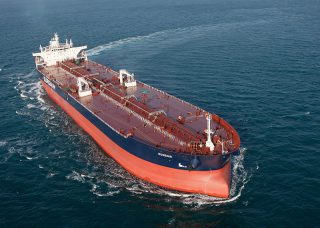BIMCO: Fleet Growth Squeezes Crude Oil Tanker Market

The crude oil tanker segment composing of VLCC, suezmax and aframax ships, experienced a net-fleet growth of 7.3%, which is equal to 24.3 million dwt during the period from January 2014 to October 2016, according to BIMCO.
The VLCC segment, with 20.7 million dwt or a net fleet growth rate of 11% took the lion’s share, followed by the suezmax segment with 4.4 million dwt or 5.5%. Whereas the aframax segment decreased by 0.8 million dwt or 1%, in relation to the fleet size of the specific ship segment.
“The recent crude oil tanker fleet growth becomes increasingly troubling, and worsen the balance between supply and demand strongly, if demolition does not pick up,” BIMCO’s Chief Shipping Analyst Peter Sand said.
In the past two years, less than 2.3 million dwt of crude oil tanker capacity has been demolished, which in comparison to the 358 million dwt of the current crude oil tanker fleet is a vanishingly small proportion.
However, BIMCO said that the demolition of the 1994-built VLCC Progress with 297,237 dwt by mid-October indicates a resumption of demolition activity for the crude oil tanker segment. Most recently in November 2016, another VLCC with 281,434 dwt was demolished, thus indicating a new trend in demolition activity.
While newbuilt deliveries in the crude oil tanker segment doubled from 0.9 million dwt in January 2014 to 1.8 million dwt in October 2016, ship demolition ceased to exist during the period as the freight markets improved significantly, bringing profitability back to the industry.
Demolition influencing factors
The key factor influencing the low demolition levels was solid earnings throughout the year in 2015. The decrease of the BIMCO dirty tanker earnings by 51% from January 2016 – October 2016 however, might have a reverse effect on future demolition activity.
Moreover, low bunker prices, which decreased from January 2014 – October 2016 by 53% or USD 301 per tonne, eased the pressure on fuel efficiency for the older ships.
Furthermore, the ship demolition price decreased from Q1 2014 – Q3 2016 on a compounded quarterly rate for VLCCs by 4% as the price dropped from 19.4 million USD to 12.3 million USD for an average ship of 42,000 ldt.
In correlation, current fleet age profiles, earnings, bunker prices and ship demolition value – are influencing demolition activity in the crude oil tanker segment.
Steady increasing orderbook
The orderbook-to-fleet ratio of 16% in Q3 2016 provides evidence for future fleet growth. However, if the fleet in future expands by more than the growing need, it will contribute to an imbalance between supply and demand, therefore resulting in decreased earnings. This should trigger higher demolition activity in the crude oil tanker segment.
“Decreased earnings of crude oil tankers since the start of 2016 is a clear sign of the mismatch between demand and supply. Something which is not fundamentally changed by the seasonal upswing in Q4-2016 as seen for VLCCs,” Peter Sand said.
“In addition to freight market uncertainties, the enforcement of the ratified ballast water treatment legislation and the IMO global sulphur cap at 0.5% in 2020, will be a stimulus for demolition of inefficient ships and therefore could serve as a catalyst for an improving freight market,” he added.
HEADLINES
- Do shipping markets want Biden or Trump for the win?
- All 18 crew safe after fire on Japanese-owned tanker off Singapore
- Singapore launching $44m co-investment initiative for maritime tech start-ups
- Cosco debuts Global Shipping Industry Chain Cooperation Initiative
- US warns of more shipping sanctions
- China continues seaport consolidation as Dalian offer goes unconditional